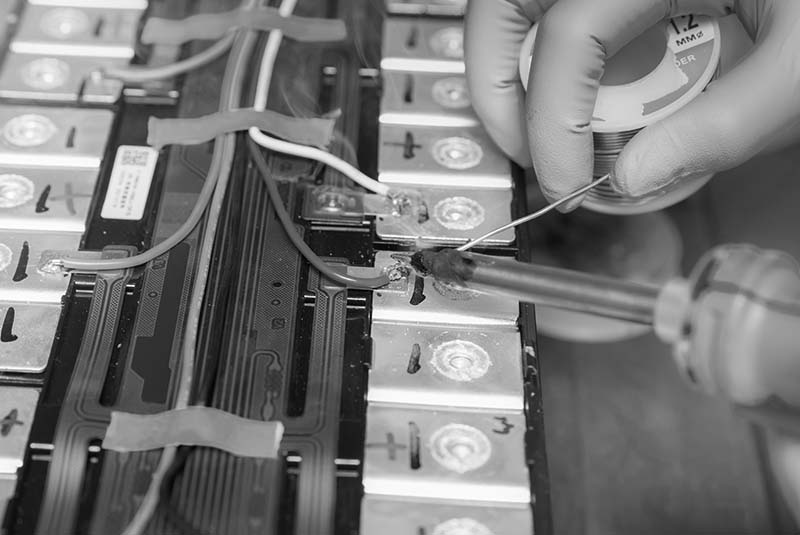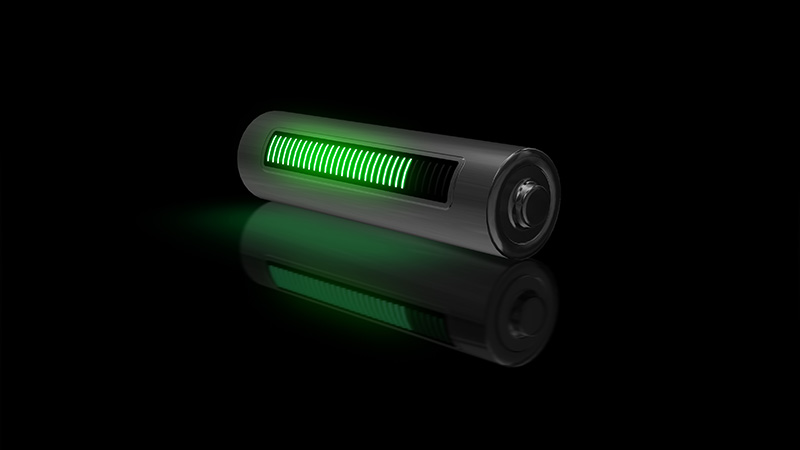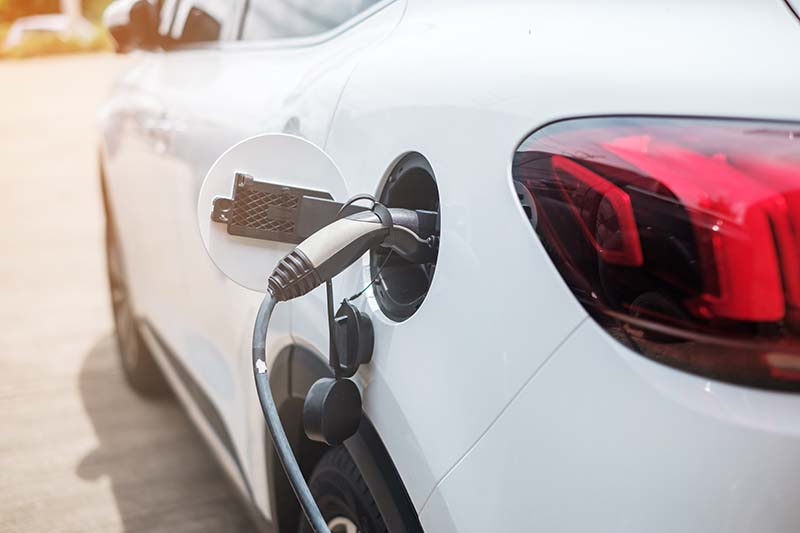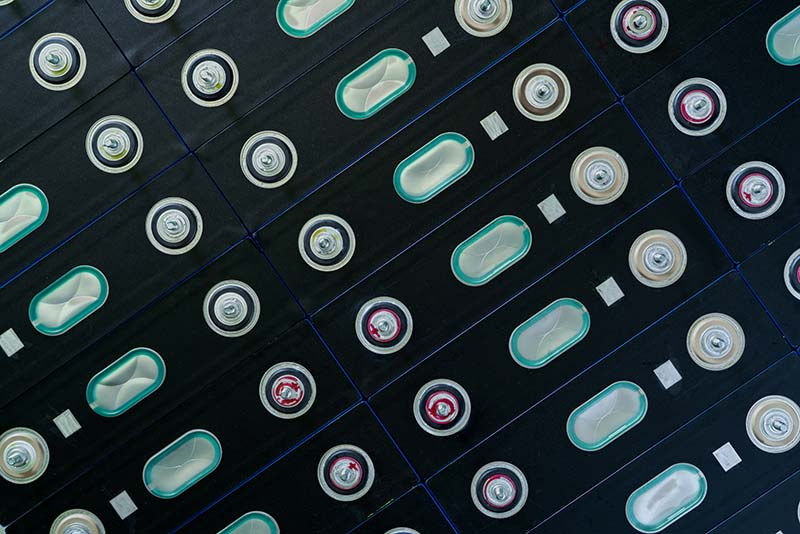How does a lithium-ion battery work? Exploring technological advancements
In today's world, lithium-ion batteries are ubiquitous, and they have revolutionized the way we use and consume energy. These batteries are at the heart of many technological advancements and have transformed various industries, from powering our mobile devices to being key components in electric vehicles and renewable energy systems.
As an industry professional or engineering specialist, understanding how lithium-ion batteries work and the latest developments in their technology can provide invaluable insights into their applications, benefits, and limitations.
Lithium-ion batteries operate by using a chemical reaction between lithium ions and the materials that make up the battery. This reaction generates electrical energy that can be stored and used to power various devices.
Over the years, there have been significant breakthroughs in lithium-ion battery technology, such as the development of new materials, designs, and manufacturing techniques. These advancements have led to improvements in battery performance, efficiency, and safety, making them an even more attractive option for a wide range of applications.
This blog explores the intricate workings of lithium-ion batteries, delving into their chemistry, construction, and operation principles.
It also highlights the significant technological advancements that are shaping their future, such as the use of solid-state electrolytes, silicon anodes, and recycling methods, among others.
By understanding these advancements, industry professionals and engineering specialists can stay ahead of the curve and leverage the latest technologies to drive innovation and growth in their respective fields.
The problem with ordinary batteries
Ordinary batteries, such as alkaline or lead-acid batteries, have limitations that make them inadequate for certain applications. They have a limited capacity and lifespan, low energy density, and are often bulky and heavy. This makes them unsuitable for use in portable devices or electric vehicles where size, weight, and performance are critical factors.
In contrast, lithium-ion batteries offer significant advantages, such as high energy density, lightweight design, and longer lifespan. They also have a low self-discharge rate and can be recharged multiple times without losing capacity. All of these features make them the preferred choice for consumer electronics, electric vehicles, and renewable energy storage systems.
Understanding lithium-ion batteries
To fully appreciate the significance of recent technological advancements, it is essential to gain a comprehensive understanding of the underlying mechanisms that make a lithium-ion battery function.
A lithium-ion battery consists of three primary components: an anode, a cathode, and an electrolyte.
The anode is the negative electrode, while the cathode is the positive electrode.
The electrolyte, which is a liquid or gel substance, acts as a medium for the movement of lithium ions between the two electrodes.
When a lithium-ion battery is charged, lithium ions move from the cathode to the anode, where they are stored.
During discharge, the lithium ions move back to the cathode, releasing electrical energy that can be used to power devices.
This process is reversible, which makes lithium-ion batteries ideal for use in devices that require both charging and discharging.
It is worth noting that the specific materials and designs used in lithium-ion batteries can vary depending on the application.
However, the fundamental principles of lithium-ion battery operation remain the same, with lithium ions moving between the anode and cathode to store and release electrical energy.
Basic working principle
The battery generates electricity through the flow of lithium ions between the cathode, typically made from lithium metal oxides, and the anode, usually formed of graphite.
The electrolyte, a lithium salt in an organic solvent, facilitates this ionic flow, while a porous separator ensures the electrodes do not come into direct contact.
The chemistry behind lithium-ion batteries
Lithium-ion batteries work on the principle of reversible electrochemical reactions between lithium ions and electrode materials. These reactions occur in the positive and negative electrodes, also known as cathode and anode, respectively.
The cathode is typically made of a lithium-based compound, such as lithium cobalt oxide (LiCoO2) or lithium iron phosphate (LiFePO4), while the anode is commonly made of graphite with a small amount of other materials, such as silicon, added to increase its capacity.
When the battery is charged, lithium ions move from the cathode to the anode through an electrolyte solution. During discharge, this process is reversed, and the lithium ions move back to the cathode, releasing energy in the form of electricity.
Advantages of lithium-ion batteries
-
High energy density: Lithium-ion batteries have a higher energy density than other rechargeable battery types, allowing for more energy storage in a smaller size.
-
Low self-discharge: These batteries have a lower self-discharge rate compared to other rechargeable batteries, meaning they can hold their charge longer when not in use.
-
Quick and efficient charging: Lithium-ion batteries have a fast charging time and can hold a charge for an extended period, making them ideal for portable electronic devices.
-
Environmentally friendly: These batteries do not contain hazardous materials like lead or mercury, making them more environmentally friendly than other battery types.
Disadvantages of lithium-ion batteries
-
High cost: The complex manufacturing process and use of expensive materials contribute to the higher cost of lithium-ion batteries compared to other rechargeable batteries.
-
Aging: As with all batteries, lithium-ion batteries degrade over time, which can affect their performance and lifespan.
-
Safety concerns: If not managed correctly, these batteries can overheat and catch fire or explode. Proper storage and handling are crucial to prevent accidents.
-
Limited lifespan: Lithium-ion batteries have a limited number of charge cycles, typically around 500-1000, before they need to be replaced.
-
Challenges with high temperatures: Extreme heat can cause damage to lithium-ion batteries and decrease their lifespan. It is important to avoid exposing them
How a lithium-ion battery charges and discharges
The process of charging and discharging a lithium-ion battery revolves around the movement of lithium ions from one electrode to another.
When the battery is charging, lithium ions are pushed from the cathode, through the electrolyte, towards the anode, owing to the external electrical power source. As these ions reach the anode, they combine with the electrons present, essentially 'storing' the energy.
Upon discharging, the reverse process occurs. The electrical device draws power, causing the lithium ions at the anode to lose an electron, transforming into Li+. These ions then migrate back through the electrolyte, moving towards the cathode.
Reaching the cathode, these ions reclaim an electron, thus returning to their original state. This movement of lithium ions while charging and discharging creates a flow of electric current, providing power to the device.
It's essential to understand that the efficiency and longevity of a lithium-ion battery heavily rely on the precision and balance in this charging and discharging cycle.
Overcharging or excessively depleting the battery can lead to irreversible damage, affecting battery performance or, in severe cases, causing safety hazards. Therefore, correct battery management and control systems are paramount in lithium-ion battery technology.
For further insights into the intricacies of lithium-ion battery technology, consider exploring our detailed guides and resources, or get in touch with our team of experts.
Key components and their functions
Through rigorous research and development, significant improvements have been made to the individual components of the battery to boost its efficiency, lifespan, and safety.
The anode, cathode, and electrolyte materials have undergone extensive testing and experimentation to identify the optimal composition and structure that can deliver the best performance.
Battery design and electronics have also been a primary focus, with innovations aimed at improving the battery's overall functionality and reducing energy losses.
These advancements have significantly enhanced the battery's reliability and efficiency, ensuring that it can deliver stable and consistent performance over an extended period.
Overall, this battery represents a significant step forward in the field of energy storage, thanks to the tireless efforts of researchers and developers who have dedicated themselves to advancing the technology.
Technological advancements
Energy density improvements
Over the years, engineers have made remarkable strides in improving the energy density of lithium-ion batteries. Energy density is the amount of energy that a battery can store per unit of weight.
With advancements in technology, new materials, such as silicon anodes, have been introduced.
Silicon anodes are preferred over traditional graphite anodes because they have a higher energy capacity.
Additionally, advancements in cathode composition have been made, which has resulted in higher energy storage capacity.
This means that batteries can store more energy, enabling devices to run for longer periods without needing to be charged.
The higher energy density of lithium-ion batteries has made them the preferred choice for many portable electronic devices, including smartphones, laptops, and tablets.
Safety enhancements
The issue of battery safety has become a significant concern in recent years, especially following reports of incidents involving overheating and fires. This has prompted considerable research and development efforts aimed at creating safer batteries.
One of the major areas of focus has been the development of better thermal management systems. These systems are designed to regulate the temperature of the battery and prevent overheating. This is achieved through the use of advanced cooling mechanisms, such as liquid cooling or heat pipes.
Another area of focus has been the formulation of better electrolytes. Electrolytes play a critical role in the functioning of a battery, as they are responsible for facilitating the flow of ions between the electrodes.
However, traditional electrolytes can be flammable and prone to thermal runaway, which can cause fires and explosions. To address this issue, researchers have developed new electrolytes that are less prone to thermal runaway, such as solid-state electrolytes.
Finally, the use of materials that are less susceptible to thermal runaway has also been explored. This includes the use of new electrode materials, such as silicon and lithium-sulfur, which have higher energy densities than traditional materials like graphite.
However, these materials can also be more reactive and prone to thermal runaway, so research is ongoing to develop safer ways to use them.
Overall, these advancements represent a significant step forward in the quest to create safer batteries, and researchers continue to explore new solutions to further improve battery safety.
Improvements in charging speed
The field of continuous development of charging speed is an indispensable aspect that caters to the needs of consumers and ensures industrial efficiency.
The usage of nanostructured electrodes and advanced electrolytes has enabled faster ion transfer rates, thereby facilitating speedy charging of batteries without compromising on capacity or longevity.
This technological advancement in charging speed holds immense potential and can bring about significant improvements in the realm of consumer electronics and industrial applications.
Cost reduction efforts
The adoption of electric vehicles (EVs) continues to face significant challenges due to their high cost.
Nevertheless, the reduction of the overall cost of lithium-ion batteries has been made possible through economies of scale, streamlined manufacturing processes, and innovations in material usage.
This has contributed to the proliferation of EVs, which have become increasingly more affordable over time.
It is noteworthy that the cost reduction of lithium-ion batteries can be attributed to advancements in technology, efficient production, and improved materials engineering.
Consequently, this trend is expected to persist, allowing EVs to become more accessible to consumers, while also enhancing their appeal as an alternative to traditional gasoline-powered vehicles.
Sustainability efforts in production
The topic of sustainability has become increasingly relevant in the context of the production of lithium-ion batteries.
The challenges inherent in extracting and processing the raw materials necessary for these batteries have prompted the industry to explore more ecologically sound production methods as well as recycling programs that promote a more sustainable lifecycle for these energy storage solutions.
As such, there is a growing emphasis on developing and adopting green technologies and practices that foster a more responsible and environmentally conscious approach to battery production.
Case studies and examples
The technological advancements of recent times have brought about significant changes in various real-world applications, revolutionizing the way we live and work.
One such impact can be seen in the automotive industry, where electric vehicles have undergone significant improvements.
These vehicles now boast longer ranges and faster charging times, making them more practical for everyday use. In the realm of portable electronics, battery life has significantly improved, allowing us to use our devices for more extended periods without the need for frequent charging.
Moreover, grid storage solutions based on lithium-ion technology have paved the way for the integration of renewable energy sources.
This has been a crucial development as it has helped us move towards more sustainable energy solutions.
These advancements have undoubtedly contributed to making our lives easier, more efficient, and environmentally friendly.
Future challenges and research
Looking ahead, the lithium-ion battery industry faces several formidable challenges. One of the most pressing concerns is the limited availability and accessibility of certain raw materials, such as lithium and cobalt, which are crucial to the production of these batteries. The extraction of these materials also raises ethical and environmental issues, further complicating the supply chain.
Moreover, as our reliance on these batteries grows, so too does the urgency to develop more efficient recycling processes. Despite notable strides in this area, current recycling rates for lithium-ion batteries remain low, underscoring a significant area for improvement.
On the research front, significant efforts are being made to overcome these challenges. For example, research into alternative materials that could replace or reduce the use of lithium and cobalt in batteries is gaining traction. Additionally, scientists and engineers are exploring innovative ways to redesign batteries to make them more recyclable.
According to Dr. Armstrong, a leading researcher in the field, "The key to a sustainable future for lithium-ion batteries lies in our ability to bring together advances in technology and responsible sourcing and disposal practices."
Conclusively, the road ahead is fraught with challenges, but with focused research and innovation, the industry is well-positioned to address these issues.
Conclusion
The journey of lithium-ion batteries is an ever-evolving one, and the technological advancements made thus far have played a crucial role in driving several industries forward.
The above discourse summarises the operational dynamics of batteries and the ongoing advancements that have contributed to the amelioration of their energy density, safety, charging speed, affordability, and sustainability.
The elucidation of these developments is expected to offer a glimpse into the current state of research and innovation in the field of batteries.
As these improvements continue to unfold, we can expect lithium-ion batteries to remain at the forefront of energy storage solutions, ushering us toward a more electrified future.










